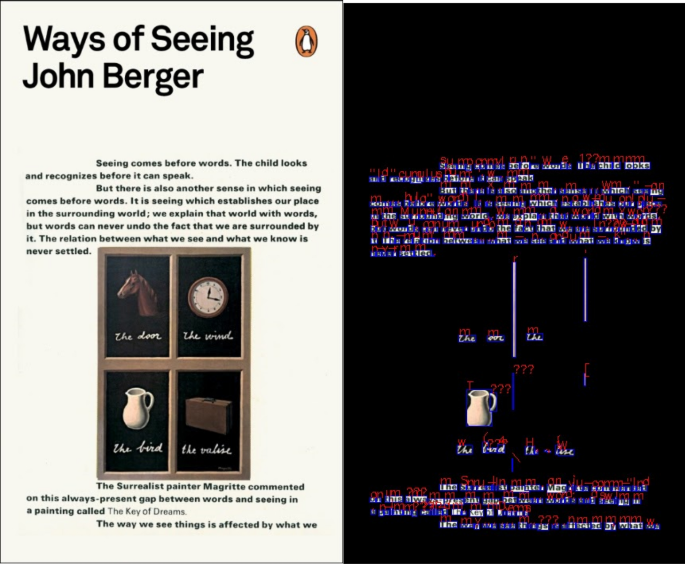
Soon after we can see, we are aware that we can also be seen. Our vision is continually active, continually moving, continually holding things in a circle around itself, constituting what is present to us as we are. (Close your eyes, move round the room and notice how the faculty of touch is like a static, limited form of sight.) We never look at just one thing we are always looking at the relation between things and ourselves. To touch something is to situate oneself in relation to it. As a result of this act, what we see is brought within our reach – though not necessarily within arm’s reach. (It can only be thought of in this way if one isolates the small part of the process which concerns the eye’s retina.) We only see what we look at. Yet this seeing which comes before words, and can never be quite covered by them, is not a question of mechanically reacting to stimuli. When in love, the sight of the beloved has a completeness which no words and no embrace can match: a completeness which only the act of making love can temporarily accommodate.

Nevertheless their idea of Hell owed a lot to the sight of re consuming and the ashes remaining – as well as to their experience of the pain of burns. In the Middle Ages when men believed in the physical existence of Hell the sight of re must have meant something di erent from what it means today.

The way we see things is a ected by what we know or what we believe. The Surrealist painter Magritte commented on this always-present gap between words and seeing in a painting called The Key of Dreams. The relation between what we see and what we know is never settled. It is seeing which establishes our place in the surrounding world we explain that world with words, but words can never undo the fact that we are surrounded by it. The child looks and recognizes before it can speak.īut there is also another sense in which seeing comes before words. The moral right of the author has been asserted Except in the United States of America, this book is sold subject to the condition that it shall not, by way of trade or otherwise, be lent, re-sold, hired out, or otherwise circulated without the publisher’s prior consent in any form of binding or cover other than that in which it is published and without a similar condition including this condition being imposed on the subsequent purchaser

#JOHN BERGER WAYS OF SEEING CHAPTER 3 SERIES#
Reissued as part of the Penguin Design Series 2008 Penguin Books Ltd, Registered O ces: 80 Strand, London WC2R 0RL, Englandįirst published by the British Broadcasting Corporation and Penguin Books 1972 Penguin Group (NZ), 67 Apollo Drive, Rosedale, North Shore 0632, New Zealand (a division of Pearson New Zealand Ltd) Penguin Books (South Africa) (Pty) Ltd, 24 Sturdee Avenue, Rosebank, Johannesburg 2196, South Africa Penguin Group (Australia), 250 Camberwell Road, Camberwell, Victoria 3124, Australia (a division of Pearson Australia Group Pty Ltd) Penguin Books India Pvt Ltd, 11 Community Centre, Panchsheel Park, New Delhi – 110 017, India Penguin Books Ltd, 80 Strand, London WC2R 0RL, England Penguin Group (USA) Inc., 375 Hudson Street, New York, New York 10014, USA Penguin Group (Canada), 90 Eglinton Avenue East, Suite 700, Toronto, Ontario, Canada M4P 2Y3 (a division of Pearson Penguin Canada Inc.) Penguin Ireland, 25 St Stephen’s Green, Dublin 2, Ireland (a division of Penguin Books Ltd)

British Broadcasting Corporation and Penguin Books PENGUIN BOOKS


 0 kommentar(er)
0 kommentar(er)
